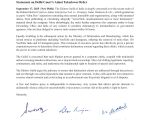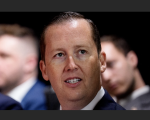employment opportunities for models in India.



The Dark Underbelly: Sexual Exploitation in the Industry
The modeling industry in India has long been tainted by allegations of sexual exploitation, a reality that has gained attention through movements like #MeToo. Male and female models alike report a culture where “compromises” are often expected for career advancement. In 2018, model Kawaljit Singh Anand’s accusation against designer Vijay Arora sparked a broader conversation about harassment faced by male models, highlighting that exploitation is not limited to women. “It’s rampant,” says model Karan Sharma, who began his career in Delhi in 2010. “Designers and choreographers sometimes act like they own you. Saying ‘no’ can mean no work.”

Female models face even higher risks. According to a 2018 report by The Model Alliance, nearly 30% of models globally report sexual harassment, with many incidents going unreported due to fear of blacklisting. In India, the situation is compounded by a lack of regulatory oversight. Former model Nikki Dubose, in an interview with the Trauma and Mental Health Report, recounted being pressured to attend “model dinners” that led to assault. “When I confronted my agency, I was dismissed,” she said. In India, models like Shimei Nathan describe a culture where young women, often minors, are coerced into compromising situations by powerful industry figures. “If you speak out, you’re labeled difficult and blacklisted,” says veteran beauty expert Elton J Fernandez.
Substance Abuse: A Silent Epidemic
The pressure to maintain a certain image often drives models toward substance abuse. Supermodel Alicia Kaur, in a December 2024 interview with ANI, admitted to witnessing drug and alcohol abuse in the industry, though she noted that media portrayals can exaggerate the issue. “I’ve seen models go down that path and lose their careers,” she said, emphasizing the need for mentorship to guide young talents away from destructive habits. Cocaine and heroin are reportedly common, with models sometimes introduced to drugs by agents or peers. The high-stress environment, coupled with irregular schedules and intense scrutiny, pushes some to rely on substances as coping mechanisms.

Shipra Dubey, a model featured in a 2024 YouTube episode, spoke candidly about the prevalence of drugs and alcohol. “It’s not just about partying; it’s about surviving the pressure,” she said, describing how some models turn to substances to cope with body shaming and rejection. The lack of mental health support exacerbates the issue, leaving models vulnerable to addiction with little recourse.
Health Risks: The Toll of Unrealistic Standards
The modeling industry’s obsession with unrealistic beauty standards takes a severe toll on models’ physical and mental health. The Model Alliance reports that 68% of models surveyed suffer from anorexia, depression, or both, with many pressured to maintain dangerously low body weights. In India, the absence of regulations like France’s law prohibiting models with a BMI below 18 leaves models vulnerable to extreme dieting and eating disorders. “Agencies tell you to lose weight or lose your job,” says Shimei Nathan, who has worked in Mumbai’s fashion circuit for five years.
Mental health struggles are equally pervasive. The constant rejection, objectification, and pressure to conform contribute to anxiety and low self-esteem. Nikki Dubose’s memoir, Washed Away: From Darkness to Light, details how her pursuit of fame led to psychological disorders. In India, where mental health stigma remains strong, models rarely have access to professional support, forcing many to navigate these challenges alone.
Economic Instability: The Pay Disparity Problem
Economic exploitation is a stark reality for many Indian models. Professional model Roshni Sharma sparked a firestorm in August 2025 with an Instagram post exposing systemic underpayment. “I was paid Rs 6,000 for a 12-hour shift,” she revealed, calling for fashion week rates to start at Rs 40,000 per day, including travel and stay. Her post resonated with models like Teajay Gil, who disclosed being paid as little as Rs 6,000–7,000 per show, despite brands reaping massive profits. “Middlemen take the lion’s share,” Gil told NDTV, highlighting how show directors and agencies often siphon off funds.

The disparity is particularly stark for male models, who earn less than their female counterparts, with rates often ranging from Rs 15,000 to Rs 35,000 compared to Rs 20,000 to Rs 50,000 for women. Fittings and backstage photo shoots frequently go unpaid, and travel expenses are rarely reimbursed. “It’s not just about money; it’s about dignity,” says Fernandez, who notes that influencers often earn lakhs for a single Instagram reel while models scrape by.
Social Security: A Missing Safety Net
The lack of social security is a critical issue for models, who are often treated as independent contractors without access to benefits like health insurance, pensions, or paid leave. The unregulated nature of the industry, as noted in a Fashion Law Journal article, leaves models vulnerable to wage theft and exploitation. “There are no contracts, no guarantees,” says model Bharat Sharma. “One bad season, and you’re out with nothing to fall back on.”
This precariousness is particularly challenging for models who enter the industry young, often in their teens. With careers that rarely extend beyond the mid-20s, many face uncertainty about their future. The lack of formal education or transferable skills, combined with the industry’s transient nature, leaves them ill-equipped for alternative careers.

Society’s View: Glamour with a Side of Stigma
In India, modeling is often seen as a glamorous but morally ambiguous profession. Society tends to view models as objects of beauty rather than skilled professionals, a perception reinforced by Bollywood’s portrayal of the industry in films like Fashion. This objectification contributes to a “dignity gap,” where models are treated as disposable by both the industry and society. For female models, the stigma is compounded by assumptions about their morality, with many facing judgment for their attire or lifestyle. Male models, meanwhile, are often dismissed as less serious professionals, further marginalizing their struggles.





